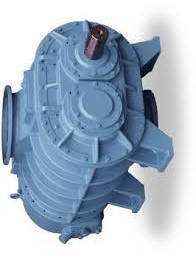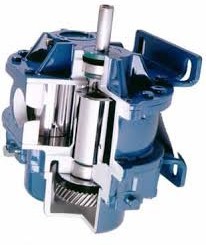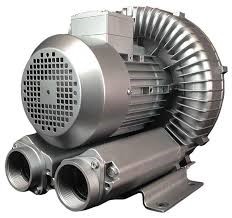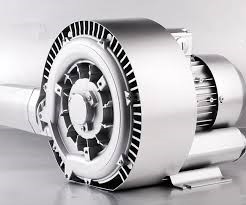
Plenty Global



Blowers are installation equipment that provides the transfer of air in the emitted environment at high or low pressure and rotates the fan with the force received from the motor.
Blower is a plumbing equipment that rotates the fan with the force it receives from the engine, which transfers the air in the emitted environment at high flow or low pressure. The fan in the blowers rotates and vacuum the air in the suction section. The trapped air is then pushed into the outlet side. Blowers are often used to move air.and Blower is equipment or a device which increases the velocity of air or gas when it is passed through equipped impellers. They are mainly used for flow of air/gas required for exhausting, aspirating, cooling, ventilating, conveying etc. Blower is also commonly known as Centrifugal Fans in industry. In a blower, the inlet pressure is low and is higher at the outlet. The kinetic energy of the blades increases the pressure of the air at the outlet. Blowers are mainly used in industries for moderate pressure requirements where the pressure is more than the fan and less than the compressor.

Centrifugal blowers are routinely used for applications such as dust control, combustion air supplies, on cooling, drying systems, for fluid bed aerators with air conveyor systems etc. Positive displacement blowers are often used in pneumatic conveying, and for sewage aeration, filter flushing, and gas boosting, as well as for moving gases of all kinds in the petrochemical industries.
And Industrial blowers with a specially designed impeller that maintains a constant and steady flow stream pulling air through the inlet and pushing it radially through the outlet. Some models have the ability to vary the orientation of the outlet by rotating the housing around the axis of the motor to one of eight angles. Atlantic Blowers offers Centrifugal Blowers with single, or three-phase motors capable of voltages up to 600V. Class I & II explosion-proof motor options are also available. Our three-phase motors are inverter duty rated and are capable of running a compatible variable frequency drive (VFD). All of our blowers are made with heavy-duty cast aluminum housings and impellers. Our Centrifugal Blowers are great for:

Such type of blowers use mechanical means to squeez fluid and yherey increase pressure and velocity as per the needs unlike centrifugal designs which impart pressure and velocity to media by flinging them outward with impellers. Here rotary lobeor root type is common which uses two counter-rotating lobed rotors to move fluid through the blower. These type of blowers are often driven by direct-coupled electric motors.


Regenerative blowers are low-pressure, high-volume blowers that generate centrifugal airflow. Regenerative blowers are capable of both pressure (or compression) and vacuum (or suction) service. Some products are geared toward either pressure or vacuum service, while others are suitable for both. Compression blowers are often configured for use as air supply units or compressors, while vacuum blowers are frequently used as vacuum pumps or fume exhausters.
The construction and operation principles of a regenerative blower gives the product its name. All regenerative blowers consist of an impeller that spins within a housing compartment. The housing contains both an inboard (or intake) channel and an outboard channel; for this reason regenerative blowers are also known as side channel blowers. When the impeller spins past the intake port, air is drawn in and trapped between the impeller blades. As the impeller continues to spin, the air is pushed both inward and outward through both channels, and this process continues until the impeller stops rotating. It is this regenerative process that allows the blower to function as both a pressure blower and a vacuum blower. While the air trapped between two impeller blades represents only a small pressure increase, the sum total of the blades, from intake to outlet, is capable of powerful continuous operating pressures.
How are Regenerative Blowers Used?
There are several different reasons why you might need a regenerative blower. Industries that work with chemicals or environmental processes often use regenerative blowers. They are also used in lifting, packaging, and conveying products. A regenerative blower can be used to remove dust or smoke from the air, extract soil vapor, or perform sewage aeration. They are well-suited for applications that require high rates of air flow at a low pressure, or when a vacuum is required in a process.
Single-Stage and Dual-Stage Regenerative Blowers:Operating Principles: The impeller rotates inside the blower housing, pulling air in through the inlet, or vacuum side. The impeller then accelerates the air or gas inside the housing until it is fully pressurized, and discharges it through the exhaust outlet, or pressure side.
Single-stage blowers are the most common type of regenerative blower; with these blowers, air travels around the internal air channel once and is then exhausted out to the application.

Dual-stage regenerative blowers can provide a lot more pressure or vacuum than their single-stage counterparts because the airflow is channeled back around the impeller for a second rotation before being exhausted. This causes the air to be more laminar which greatly increases the velocity pressure of the conveyed air.
